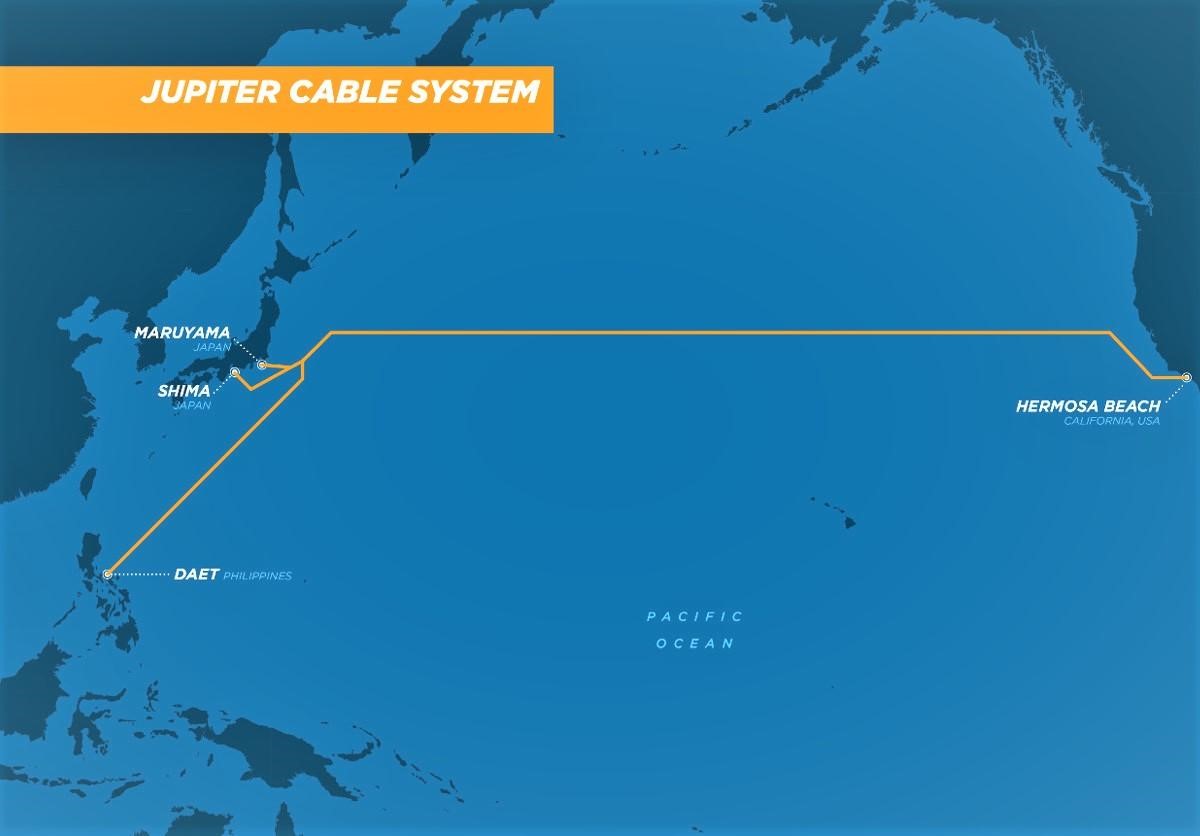
Leading telecoms and digital services provider PLDT has finalized the technical and management agreements with a consortium of international providers that will further increase its international capacity and resiliency of its direct undersea fiber links to the United States and Japan through the trans-Pacific cable system called "JUPITER".
Spanning 14,000 kilometers, the new undersea fiber will connect to PLDT’s cable landing station in Daet, Camarines Norte and will provide additional capacity of more than 22Tbps from the Philippines directly to and from Japan, and 17.6Tbps to the West Coast in the US. The Jupiter cable system will use state-of-the-art, upgradeable technology using an “open cable model” which will allow PLDT to increase the capacity of its own fiber links by investing in the terminal technologies that boost data throughput.
“This project will enable us to further improve the capacity and resilience of the country's international connectivity and thus continue to deliver unparalleled world-class internet service to our customers," said PLDT Chief Revenue Officer Alfred S. Panlilio.
The new cable system is expected to be completed and operational by third quarter next year. It will utilize new technology that will allow PLDT and other consortium participants to quickly upgrade capacity in response to growing data traffic and customer data usage.
“This investment is of strategic importance given that a significant amount of content are downloaded by data users from servers abroad, particularly from the United States and Japan," he added.
After getting the National Telecommunications Commission's (NTC) approval to participate last year, PLDT is investing US$136.7 million (P7 billion) in the project with a consortium of global companies that include Amazon, Facebook, SoftBank, PCCW Global and NTT Communications.
The addition of Jupiter positions PLDT to serve international connectivity requirements better, particularly for enterprise customers. “JUPITER not only provides increased capacity going to business-relevant markets, it likewise adds strategic diversity options out of multiple international cable system routes and cable landing stations which businesses can choose from” added Jovy Hernandez, Head of PLDT and Smart Enterprise Business Group.
Under the open cable model, consortium participants in the JUPITER cable system are acquiring the fiber cables themselves, not just a share of the system’s fiber capacity. This enables PLDT and other consortium participants to quickly increase their undersea cable capacity without having to wait for the upgrade cycle of the consortium that is followed in most cable system models.
“This new model in constructing international cable systems will allow us to be more agile and responsive to the needs of our customers,” said PLDT Vice President for International Submarine Cable Networks Gene Sanchez.
“We expect that this new project will further complement our existing network systems and address the increasing data traffic consumption of our PLDT fiber-to-the-home subscribers, enterprise business customers, and our LTE mobile data users,” he added.
This investment will fortify further the quality of PLDT’s network as recognized by global leader in testing and analysis firm Ookla which named PLDT and Smart as the Philippines’ fastest networks both in fixed and wireless, as well as the recognition for the best mobile provider of video experience for Smart from mobile analytics firm Opensignal.



